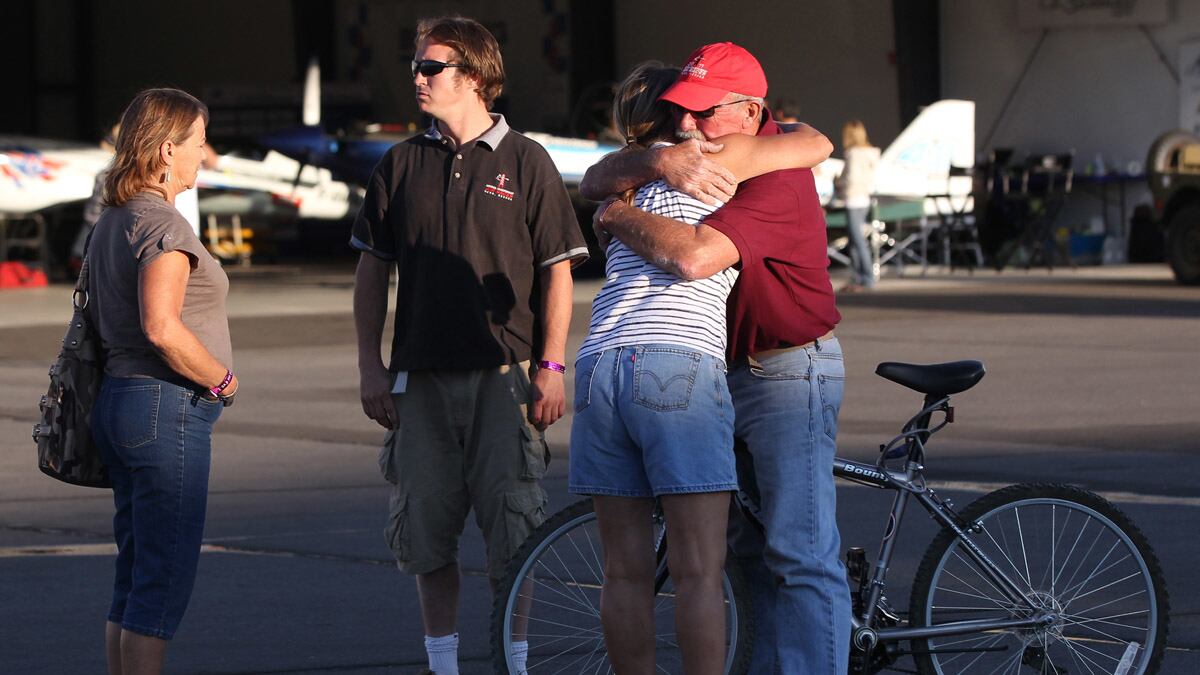What was a 74-year-old pilot doing in a souped-up World War II fighter flying in an air race? The tragedy in Reno is a ghastly reminder that the normal rules of public safety are suspended when air shows are involved.
There is a pretense of caution: The course of the race is designed to avoid flying directly over crowds. But the sheer physics make that absurd. An airplane flying at more than 400 mph at low altitude is potentially a bomb. It takes only the slightest hiccup in an engine, structural failure, pilot error, or blackout to create a situation like the one at Reno.
The P-51 Mustang flown by Florida real-estate developer Jimmy Leeward—a veteran of racing and movie stunts—had been rebuilt to make it faster, with a more streamlined cockpit canopy and a more powerful engine capable of powering it to 500 mph. The original Mustang was one of the fastest airplanes of its day, representing the ultimate in what could be squeezed from piston-engine technology.
But that was not good enough for the competition circuit. These vintage hot rod racers were catnip to testosterone-pumped owner pilots. The classic wartime fighters were much sexier than jets. They had the roar of tigers and flying them by the seat of the pants took the idea of manhood to new levels. If you could handle one of these you could handle anything.
World War II produced three outstanding fighters: the German Messerschmitt 109, the British Spitfire, and the American Mustang. The Mustang was an agent of change in the air war over Europe, the first fighter with the range to escort the swarms of B-17 Flying Fortresses hammering German cities and industry. Nazi fighters were no match for it, and the aerial bombardment shortened the war.
In fact, the Mustang’s aerodynamics were so advanced that it proved to be supremely adaptable to the demands of contemporary air racers. However, making the kind of changes that Jimmy Leeward ordered up for his Mustang—spurred by the Reno show’s rubric, “Always remember to fly low, fly fast and turn left,”—meant that he was pushing the absolute limits of what an airplane of this vintage could manage. Even one minor glitch and the machine could wrench itself out of his control.
This is a very different culture to that of military air show performers like America’s Blue Angels and Britain’s Red Arrows. These are displays of precision aerobatics and close formation flying, choreographed not to impress with speed but to impress with immaculate airmanship, and by doing so promote the idea of the air force as an elite force.

These teams practice under rigorous controls but, even then, there are accidents. Only last month a Red Arrows jet performing with the team above 300,000 spectators at Bournemouth in southern England veered out of formation and crashed into a field, killing the pilot.
And in May the flight leader of the Blue Angels, Navy Commander Dave Koss, was relieved of his post for flying dangerously low maneuvers—something that had never happened before. The last Blue Angels fatality was when a jet clipped the top of a tree during a sharp turn near Beaufort, S.C., in 2007 and crashed, killing the pilot and injuring eight people on the ground.
The worst air-show crash in history was at the Ramstein air base in Germany in 1988 when the Italian air force team, Frecce Tricolori, flying a stunt called “the pierced heart” ended with three of the jets colliding and then slicing through the crowded spectators, killing 70 and seriously injuring 346 others—carnage recorded pitilessly on camera.
And remember: these military pilots are young, flying at the peak of their fitness, wearing special suits to withstand what are called G-forces—the pressure on the body created by high speed maneuvers—and very few aspirants ever make the grade. Imagine, then, how reckless it is to have old men, who can succumb to sudden health problems, flying hot rods barely 100 feet above thousands of people. It beggars belief.
As bad as it is, the Reno disaster could have been worse. In the Ramstein crash the jets turned into balls of fire as they spun into the crowd. Video of Leeward’s Mustang shows an almost vertical dive into the ground and a wide dispersion of lethal debris but no ball of fire—probably because Leeward, to reach top speed, had limited the amount of fuel in his tanks for the sake of weight.





